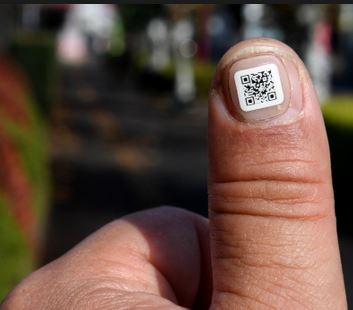Cocoa flavonoids could be the key to fighting age-related mental decline and improving cognitive function in older adults. For years, doctors and scientists have been on the lookout for a magic pill, some daily dose able to fight age-related cognitive decline and potentially stop dementia in its tracks. While Mary Poppins counseled a spoonful of sugar to cure most ills, the real nutritional superstar may actually be chocolate. According to a recent article published in Frontiers in Nutrition, cocoa flavonoids- one of the main ingredients in your typical candy bar, could enhance human cognition. “Through a variety of direct and indirect biological actions, in part, still speculative, cocoa and cocoa-derived food have been suggested to possess the potential to counteract cognitive decline and sustain cognitive abilities, particularly among patients at risk,” explain the study’s authors. “Although still at a preliminary stage, research investigating the relations between cocoa and cognition shows dose-dependent improvements in general cognition, attention, processing speed, and working memory.” A Recipe for Healthy Brains Chocolate’s potential to positively impact cognitive function derives from the cocoa flavonoids influence on cardiovascular function as well as its potential as a neuromodulator. In addition to flavonoids, chocolate also contains other “functional ingredients,” including methyl xanthine caffeine and theobromine, which paired together can also positively influence neurocognitive function. “Moreover, cocoa flavanols…exert a protective role on cognitive performance and cardiovascular function specifically impaired by sleep loss, in healthy subjects,” write the study’s authors. “Together, these findings converge at pointing to cocoa as a new interesting nutraceutical tool to protect human cognition and counteract different types of cognitive decline, thus encouraging further investigations.” Sweetening the Golden Years The study’s authors also delve into the possibility regular chocolate consumption could be beneficial for older adults. In addition to protecting cognitive...
Credit Trends
For Spring Leasing Season
With winter now behind us, property management staff must now prepare for what looks to be a busy spring leasing season. More than ever, management companies are using screening data to maximize the number of potential leases, negate financial risk, and keep their communities safe. Data aggregated by Yardi Resident Screening forecasts a greater chance for higher occupancy and stronger tenant performance this spring due to increased application traffic, job growth, and continued improvement of applicant credit quality. Application Traffic vs. Job Change The below graph shows the correlation between job change (blue line) and application traffic (red line). As jobs are created, application traffic tends to increase, which indicates that when people are employed and feel financially stable, they will consider moving to a larger unit or luxury community. The sharp decline in 2008-2009 represents the time frame when the economy bottomed out and went into a recession. Now, with a recovering market and more available jobs, potential renters are looking for better places to live. In addition to this, property management companies can continue to cast a wider net when filling units due to long-time homeowners looking to downsize, and a millennial generation that is still avoiding the permanence of home ownership. Credit and Screening Performance Trends Overall, credit quality is improving which means there are less instances of medical debt, foreclosures, and bankruptcy on an applicant’s credit report. Data shows an increase in potential renters with thin or no credit signifying that millennials are still a mainstay in the applicant pool. Other factors leading to positive credit trends can be attributed to longtime homeowners selling their homes to move to apartments. Downsizing from home ownership to renting an apartment provides less upkeep responsibility and more flexibility in lifestyle. This pool of...
Dementia Tags
Dementia Care
As a dementia crisis looms, one Japanese city has ditched GPS locators and other wearable devices in favor of low-tech stickers for tracking elderly patients. While dementia locators have been around for a couple of years, a new system developed in Japan aims to fix some of the issues inherent t wearable tracking devices. Ditching pendants and pocket GPS trackers, a company in Iruma, Japan has developed a QR-code tagging system for dementia patients. Beyond the ID Tag Typical medical ID bracelets and patient wristbands still serve an important function, but anything wearable can be damaged or lost. Because dementia patients are often incapable of supplying basic information about their identity, the ability to affix a permanent identifier has become increasingly important. While microchips may seem like an obvious solution, without the tools to read an implanted device any subcutaneous identifier has limited utility. Similarly, GPS trackers must often be within range of satellite or mobile service to be useful. As a result, there’s a growing need for a practical, low-cost and easily managed solution. The one-centimeter QR stickers recently deployed in Iruma are water resistant and designed to last up to two weeks. They can be affixed to a fingernail or toenail, and can be read by any free QR code mobile app. The code itself includes a unique identifier, along with the name, telephone number and address of the patient. The service, which is free, was just launched in November of this year to positive response. “There are already ID stickers for clothes or shoes, but dementia patients are not always wearing those items,” a Japanese official explained to AFP news. “Being able to attach the seals on nails is a great advantage.” A Crisis Point The World Health Organization estimates some 36...
Empire State Success
New Yardi NY office
In 2004, Yardi opened its doors in Glen Head, New York as part of the BJ Murray acquisition. The team of 16 employees set out to define a course for the fledgling office. “We faced the challenge of merging functionality, converting client platforms and creating a shared culture,” recalls Richard Malpica, Vice President and General Manager, Eastern US, Sales at Yardi. “I don’t know if there was an official strategy for [merging cultures]. I think we made it clear, from a Yardi perspective, that the company was committed to integrating the group and growing together,” says Malpica. “It was really a matter of understanding people’s skills and desires and plugging them into our framework. They can create a new trajectory for a long-term career with the company.” Over a span of several years, the New York office steadily found its way. Employees discovered new applications for their talents and practical ways of supporting one another along the journey. In addition to merging corporate cultures, Yardi found itself adapting to the collective New York culture. The market proved to be rich with opportunity but difficult to conquer. For the Santa Barbara-based company, the challenge of the New York market was three-fold: First, the company had to establish a local presence and reputation. “There is a New York thing, like anything from anywhere else is kind of irrelevant, right?” said the New York native. “New York clients like to know that you can jump on a train, get in a car, and be there in the afternoon or tomorrow morning. Why do you have to get anything from anywhere else? Why isn’t it here?” Once a local flavor is established, Yardi strived to form relationships in a market where loyalties are strong and tough to penetrate....



